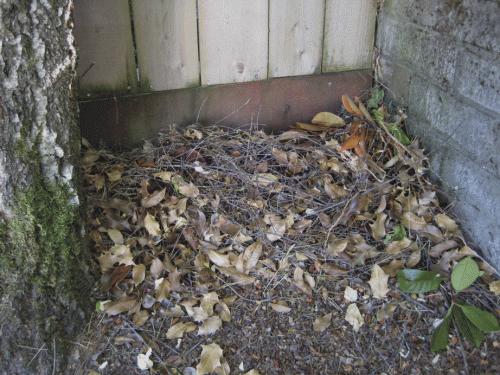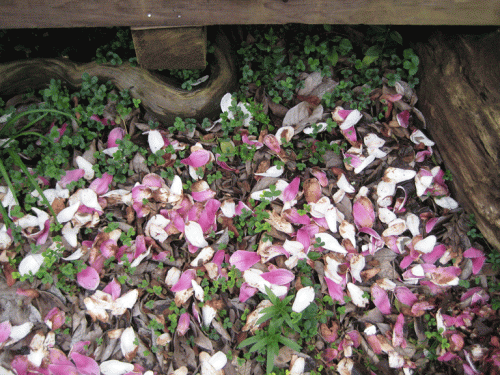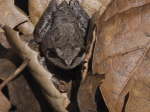
Day 4 in this 6-day video series: Preparing patio pots for winter veggie planting.
First a video re “Patio Veggie Pots”, then some “celebrating leaf liter as animal habitat” pics (below the video):
Patio Veggie Pots 4 of 6 (video):
Celebrating leaf liter as animal habitat (pics):
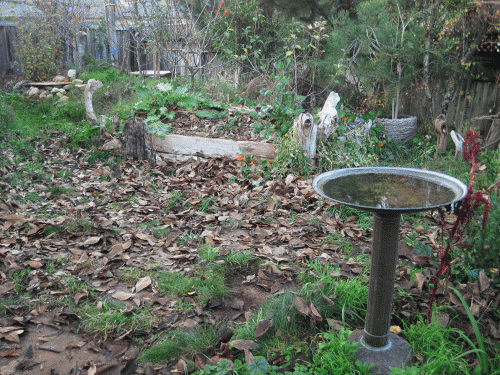
Leaves, leaves, leaves -- habitat everywhere! The 4 aspects of habitat (food, water, shelter, and space) are all found in a moist pile of leaves. A lot of the fallen leaves will become the topsoil's newest, freshest, and most-microbe-infused organic matter.
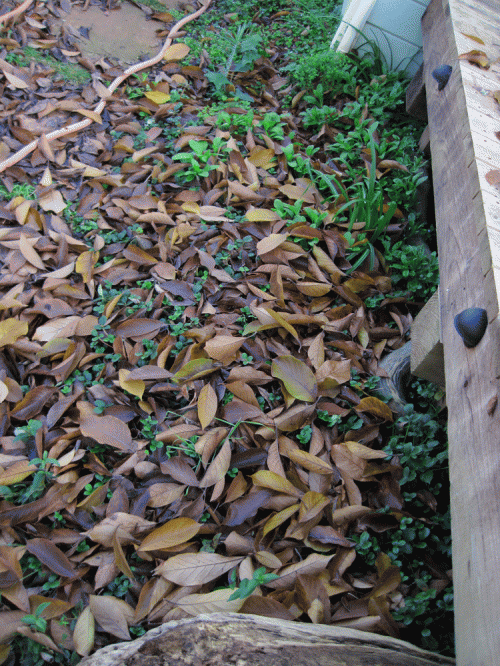
Tulip magnolia leaves alongside path and deck. Some of these leaves were removed (please don't use the term "cleaned up" because they were not dirty in the first place!), and some leaves were left as is. Those left in the garden bed and around the edges of the path continue to provide habitat AND nutrition returning to the garden.
Pics and captions from Tony’s new book, Habitat It and They will Come :
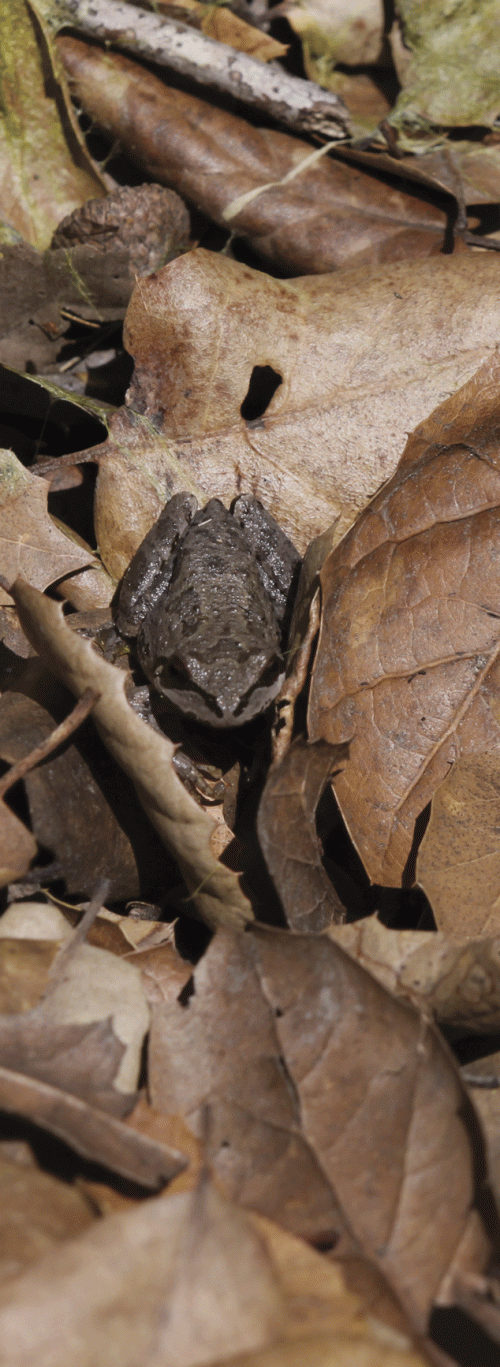 Figure 3.44 Pacific Chorus Frog (Pacific Tree Frog) in Oak Leaves. Note the camouflage pattern to its skin, how well it blends in to the brown leaf layer. This frog species can switch from a green phase to a brown phase, but not immediately. Although the process is not instantaneous, the color scheme changeability comes in handy as the seasons change. The Pacific Tree Frog’s skin also helps us identify it — there is often a “triangular or Y-shaped dark spot on the head.” [Stebbins (2003), page 222.]
Figure 3.44 Pacific Chorus Frog (Pacific Tree Frog) in Oak Leaves. Note the camouflage pattern to its skin, how well it blends in to the brown leaf layer. This frog species can switch from a green phase to a brown phase, but not immediately. Although the process is not instantaneous, the color scheme changeability comes in handy as the seasons change. The Pacific Tree Frog’s skin also helps us identify it — there is often a “triangular or Y-shaped dark spot on the head.” [Stebbins (2003), page 222.]
Figure 4.110 Found Treasure. Every day, run of the mill, unpretentious yard debris. Treasure to be found when wanting to create a natural look for your once in a lifetime, diamond in the rough, First Class habitat.
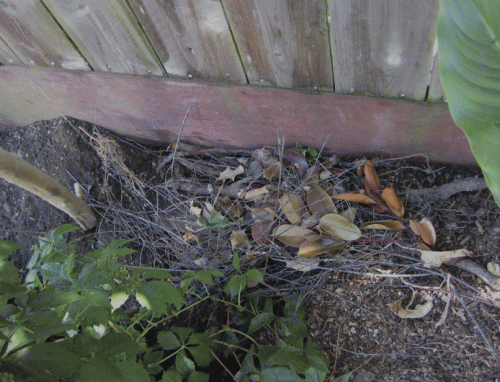 Figure 4.111 Secret Passageway. Yard debris is used to hide the habitat and loosely cover the gap under the fence. Remember that the organic yard debris is habitat itself, even before critters reach the Shangri La of Potato Bug Submarine.
Figure 4.111 Secret Passageway. Yard debris is used to hide the habitat and loosely cover the gap under the fence. Remember that the organic yard debris is habitat itself, even before critters reach the Shangri La of Potato Bug Submarine.
Figure 2.28 Leaf Underpasses and Overpasses. pages 50-51 No, fallen flower petals and leaves are not leaf litter AND they need not be cleaned up. How did such a rich resource become so unwanted anyway? Especially if not too thick a layer, leaves left to return to the soil provide habitat for microbes and small animals, which in turn provide food for larger critters.
Happy planting veggies on your patio AND rustling in the leaves. See you tomorrow.
Tony

